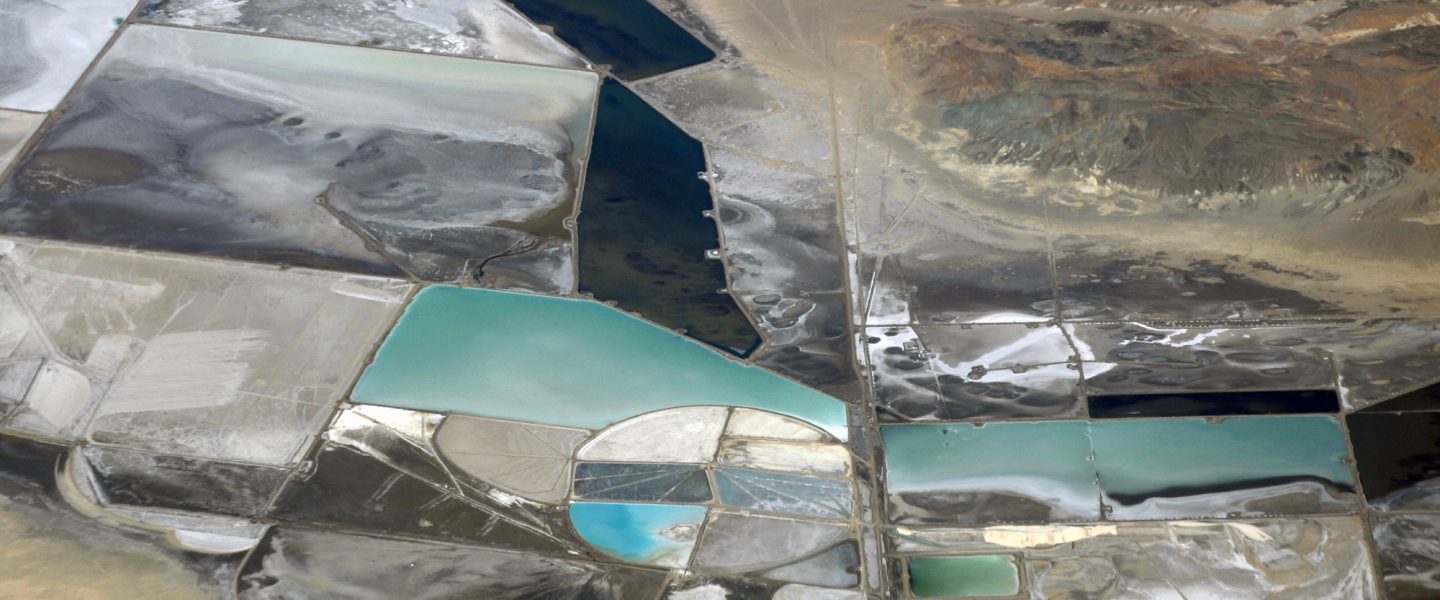US Can Shift to EVs Without Widespread, Destructive Mining
A report shows how the US can decarbonize transportation while drastically driving down the amount of lithium it needs to mine.
|
Listen To This Story
|
A new report chalks out pathways for the United States to heavily reduce the amount of mined lithium it needs to decarbonize transportation and sidestep “irreversible harms” to water, air, and animal habitats — especially near Indigenous lands.
“The question is not whether we decarbonize the transportation sector, but how we decarbonize it,” the report’s lead author Thea Riofrancos, an associate professor of political science at Providence College, said during a webinar discussing the research.
“What this report will get into is the fact that there are multiple electrified futures ahead of us that all get us to zero emissions but differ dramatically in how much mining they would require and how much mobility they would provide to Americans.”
Transportation is the single largest source of US emissions, making its transition off fossil fuels central to the country’s decarbonization strategy. So far, President Joe Biden’s administration has pushed to cut transportation emissions by electrifying personal vehicles — a strategy that comes with its own suite of environmental and human rights crises because it will require a massive amount of lithium for battery manufacturing, The Guardian says.
“Conversations [about the dangers of mining] can lead folks to think that there’s a zero-sum trade-off: either we address the climate crisis or we protect Indigenous rights and biodiversity,” Riofrancos told Grist. “This report asks the question: is there a way to do both?”
The report finds that a decarbonization scenario that reduces car dependency and limits electric vehicle (EV) battery sizes can lower the demand for lithium between 18 and 66 percent. “Even if the car-centricity of the US transportation system continues, limiting the size of EV batteries can cut lithium demand by as much as 42 percent.”
The researchers designed a material flow analysis and paired it with socioeconomic pathway modeling to determine decarbonization scenarios for US transportation. They outlined four possible scenarios: one where the current transportation sector is electrified but otherwise the same, and three others that envision different scales of ambition for reducing battery sizes and implementing societal changes like improving public transit, densifying metropolitan regions, and expanding battery recycling.
“In terms of summarizing just the most effective ways for us to reduce future lithium demand while meeting our 2050 goals for decarbonization, we need to focus on reducing demand for passenger vehicles,” co-author Alissa Kendall, a professor of civil and environmental engineering at UC Davis, told the webinar. Kendall said that will mean investing in better mobility options and densifying urban areas, while also reducing battery sizes and encouraging battery recycling.
The Biden administration’s strategy so far does not align with the report’s proposals. It emphasizes vehicle electrification and expands domestic lithium mining through the Inflation Reduction Act.
“The conversations are happening, but they’re not connected with congressional funding priorities at all,” said Riofrancos.
If the US continues on this trajectory, the increased demand for lithium mining will be environmentally destructive, and since 79 percent of the country’s known lithium deposits sit within 56 kilometers (35 miles) of Native American reservations, would disproportionately affect Indigenous communities.
For example, mining the lithium deposits near Thacker Pass, Nevada, “will cause irreversible harm to the Fort McDermitt Paiute and Shoshone Tribe, their ancestral massacre sites, water, air, medicines, and culturally important wildlife,” said Kassandra Lisenbee, outreach and just energy transition director at Great Basin Resource Watch.
Such communities are facing “complete changes to their lifestyles from these projects.”
Mining Thacker Pass will disturb roughly 5,695 acres of habitat, pull groundwater equivalent to the amount used by 15,000 US households annually, and produce a lifetime total of 354 million cubic yards (270.7 million cubic meters) of clay tailings waste that could leak and contaminate the area’s soil and water, the report states.
“Just solutions should center on directly affected communities who deserve free, prior and informed consent,” said Lisenbee. “We need to be thinking about more than carbon and protecting biodiversity and protecting our carbon sinks that are water resources.”
“We need to think about how lithium, in and of itself, can be a major driver of climate change, as well.”
The US Bureau of Land Management approved the Thacker Pass mine less than one year after posting a notice of intent in January, 2020, even though similar regulatory reviews usually take three to five years, Lisenbee said. Advocacy groups filed a lawsuit against Lithium Americas Corp. to stop the mine, but it was dismissed in a recent court ruling upholding the federal approval. The company says it plans to begin construction this year.
This story by Christopher Bonasia was originally published by The Energy Mix and is part of Covering Climate Now, a global journalism collaboration strengthening coverage of the climate story.





